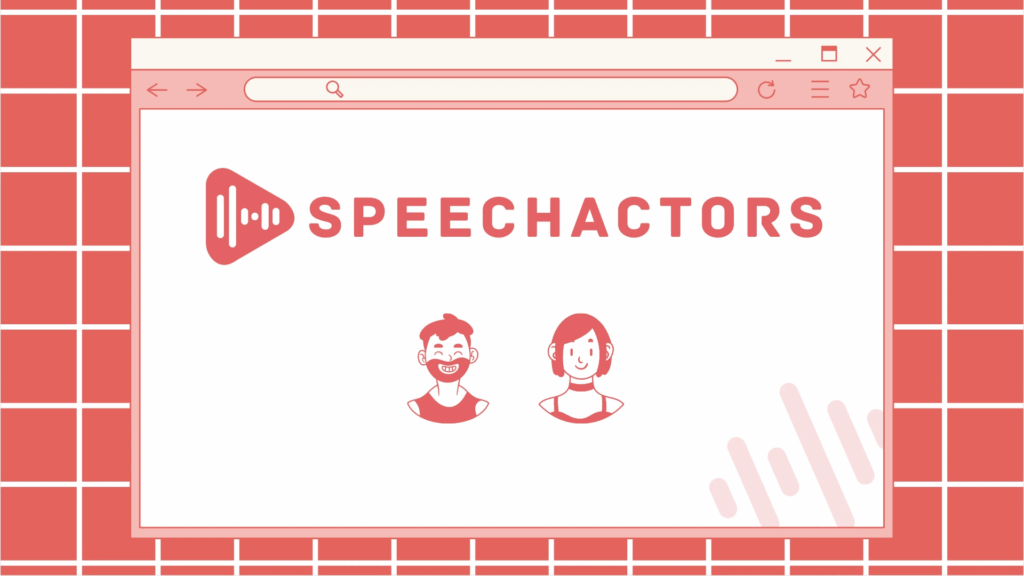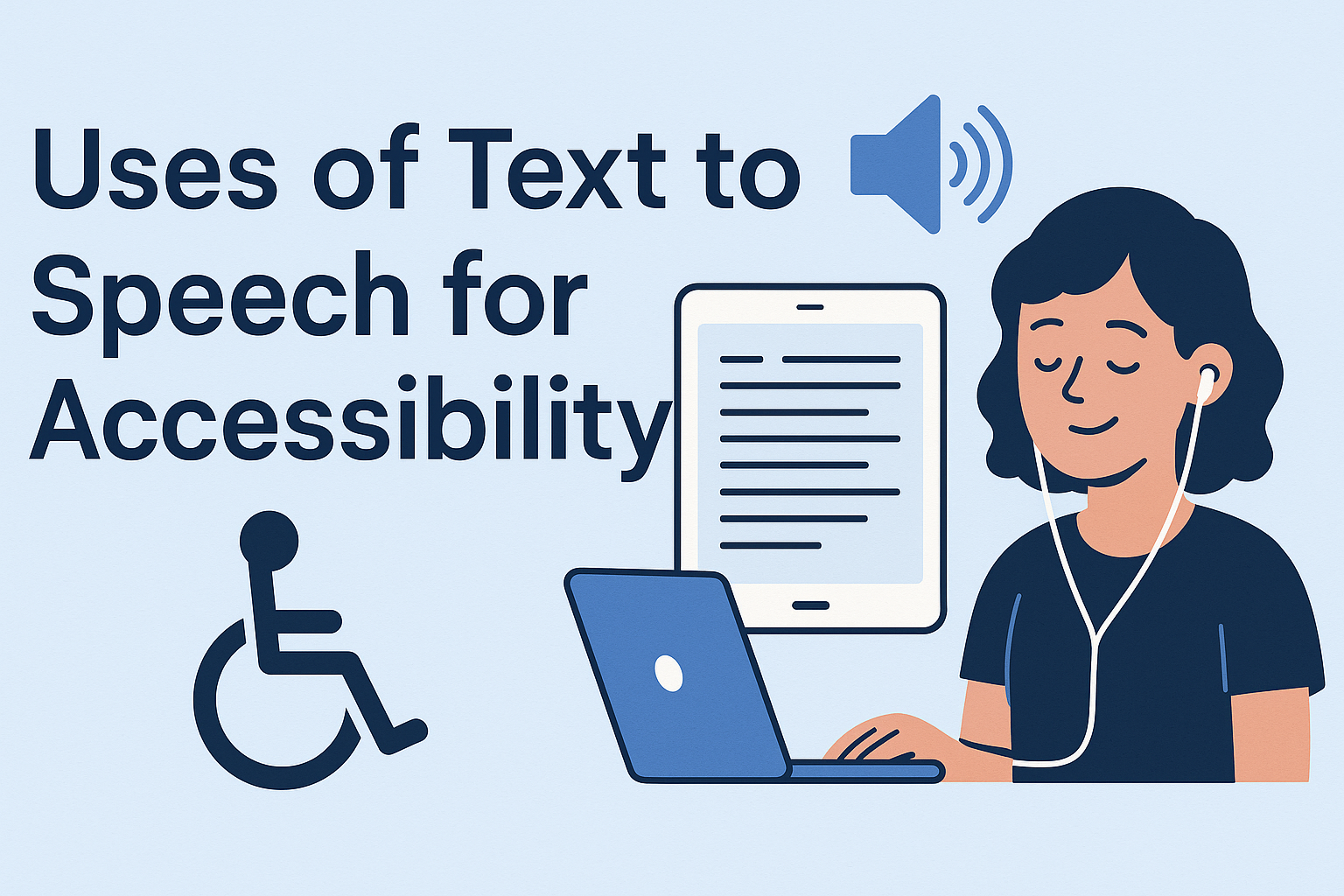Text-to-Speech (TTS) technology has become a game-changer in making digital content more accessible. By converting written text into spoken words, TTS offers valuable support to individuals with visual impairments, dyslexia, and other reading challenges. It enhances the user experience across various platforms, making information more accessible and engaging.
In this blog, we’ll explore the wide range of benefits and real-life applications of TTS technology in improving accessibility, ensuring that everyone, regardless of ability, can fully engage with digital content.
What is Text-to-Speech (TTS)?

Text-to-Speech (TTS) is a technology that converts written text into a spoken voice. It allows computers, smartphones, and other devices to read content aloud using natural-sounding voices.
TTS works by processing the text, breaking it into smaller parts, and using speech synthesis to create clear audio. Modern TTS uses AI to make speech sound more human, with proper tone and rhythm.
It is widely used for accessibility, helping people with visual impairments, reading difficulties, or learning disabilities listen to books, articles, or instructions. TTS also supports hands-free use in navigation apps, virtual assistants, and e-learning platforms, making digital information easier to access for everyone.
Key Benefits of TTS for Accessibility
A. Supporting Visually Impaired Users
TTS converts text-based content like websites, books, and documents into natural-sounding speech, making information accessible without visual reading.
It enhances online navigation by reading menus, links, and descriptions aloud, improving usability. This provides a seamless and independent digital experience for visually impaired users.
B. Aiding Users with Dyslexia and Reading Disabilities
TTS supports reading comprehension by allowing users to listen while following text visually, reinforcing understanding.
It benefits dyslexic students by aiding literacy development, improving focus, and reducing fatigue caused by prolonged reading. This helps learners engage more effectively with educational material.
C. Assisting Non-Native English Speakers (ESL)
TTS helps ESL learners improve pronunciation by offering accurate voice models to imitate. It enhances comprehension through clear audio delivery and supports language learning by reading content in a natural tone. Multilingual voice options allow global audiences to access information in their preferred language.
Real-World Applications of TTS for Accessibility
In education, TTS helps students read textbooks, follow online courses, and learn on e-learning platforms with ease. In healthcare, it delivers patient education, medical instructions, and prescription details in clear, natural voices. In customer support, TTS powers websites, mobile apps, and voice assistants to provide quick, spoken answers to users.
Additionally, public services use TTS on government websites, transport updates, and legal portals to ensure everyone can access important information. By turning written content into clear audio, TTS makes learning, healthcare, support, and public resources easier to understand and more inclusive for all.
Why TTS is Essential for Compliance with Accessibility Standards
TTS is essential for compliance with accessibility standards because it ensures that online content is understandable for people with visual, reading, or learning difficulties. A good TTS tool should have a clear, natural-sounding voice quality, support multiple languages, and offer customization like speed, pitch, and tone control.
These features make content more inclusive and engaging for everyone. Speechactors meets these needs by providing high-quality, customizable voices designed for various accessibility applications. Its wide language support and realistic intonation help organizations deliver content that aligns with accessibility laws, making digital platforms user-friendly and compliant while improving the listening experience for all users.
Choosing the Right TTS for Accessibility Needs

Choosing the Right TTS for Accessibility Needs means focusing on features that make listening clear, comfortable, and useful for everyone. Look for software with high-quality, natural voices, support for multiple languages, and options for customization like speed, pitch, and tone.
This ensures the output matches different user needs, whether for reading, learning, or communication. Speechactors is a powerful choice for accessibility, offering lifelike voices that can be tailored for various applications.
From educational content to assistive reading, it delivers clear, expressive speech in many languages. Its flexibility makes it ideal for creating personalized audio that improves understanding and engagement for all types of users.
Future Trends in TTS for Accessibility
Future trends in TTS for accessibility focus on lifelike, controllable voices and seamless integration across everyday devices.
New AI models make speech sound natural, with fine control over pitch, rhythm, and emotion for clear intent and humane tone.
TTS will act as a core layer of inclusive digital experiences, aligning with W3C principles so that content is perceivable, operable, and understandable by all.
Smart homes will speak contextually in rooms and cars, while wearables will read messages, alerts, and health data in real time.
On-device and edge AI will cut latency, protect privacy, and keep TTS working offline across phones, watches, and IoT hubs.
Frequently Asked Questions (FAQs)
How does TTS improve accessibility for people with disabilities?
Text-to-speech (TTS) helps people with disabilities by converting written text into speech. It supports those with visual impairments, dyslexia, and learning disabilities, making information more accessible and easier to understand. TTS empowers independence, enhancing learning and daily activities.
What industries benefit most from TTS accessibility?
Industries like education, healthcare, publishing, and customer service benefit greatly from TTS accessibility. It helps improve communication, learning, and customer experience, making information more accessible to everyone.
Can TTS help with language translation for global users?
Yes, TTS can assist with language translation by converting text into speech in different languages, making content more accessible to global users. This enhances communication across regions, fostering better understanding and engagement.
How does Speechactors ensure accessibility compliance?
Speechactors ensures accessibility compliance by offering text-to-speech (TTS) solutions that meet WCAG standards. This helps users with disabilities, like those with visual impairments, easily access content and information.
What are the limitations of TTS technology for accessibility?
TTS technology for accessibility can struggle with tone, emotions, and context. It may not fully capture human nuances, making some content harder to understand, especially in complex scenarios.
Conclusion
Text-to-Speech (TTS) technology plays a pivotal role in enhancing accessibility, offering individuals with disabilities equal access to digital content. By enabling seamless interaction with websites, apps, and devices, TTS breaks barriers to communication and information.
Adopting TTS ensures a more inclusive and user-friendly digital experience for everyone. Explore Speechactors today to unlock the full potential of TTS and make your platform more accessible and engaging for all users. Embrace inclusivity and transform how your audience connects with your content.
